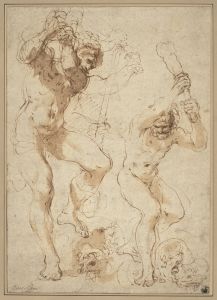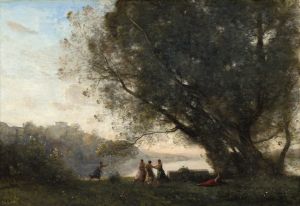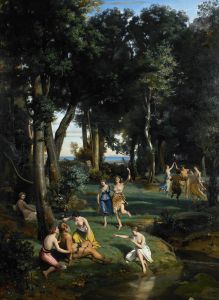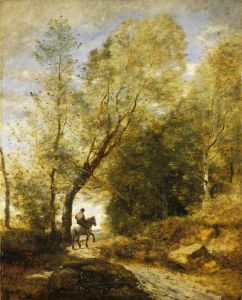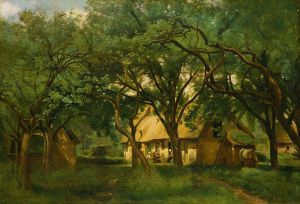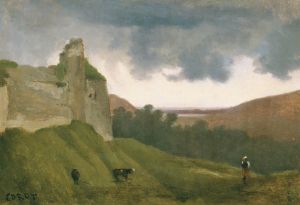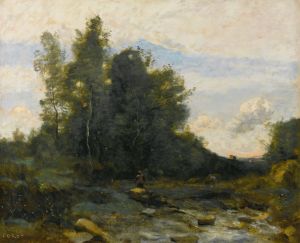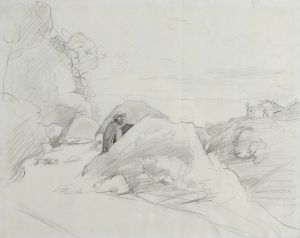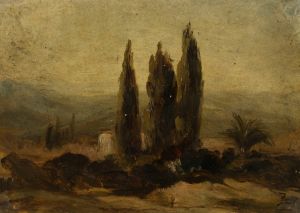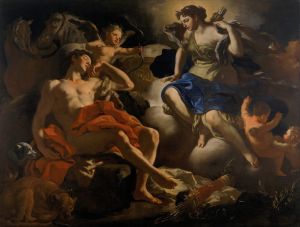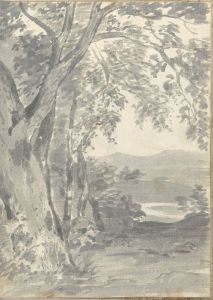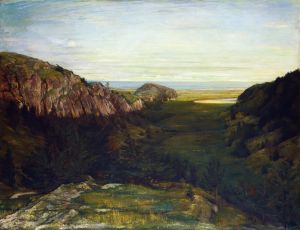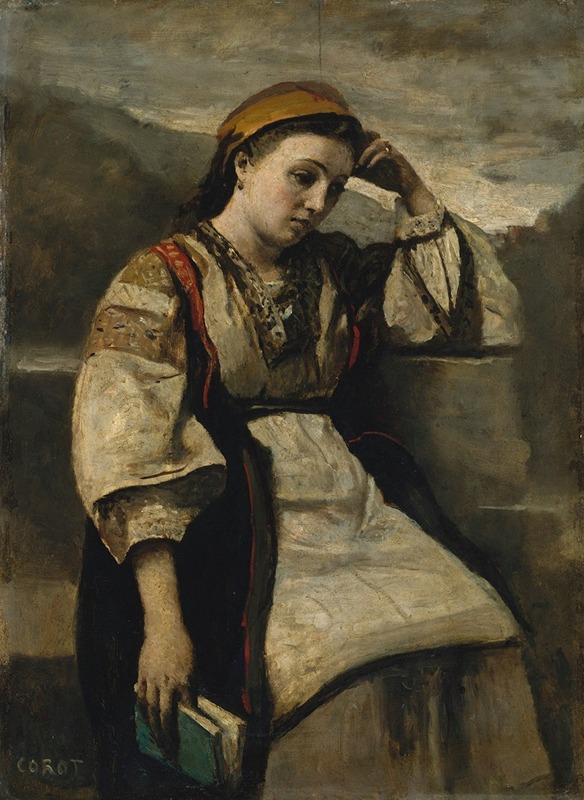
Reverie
A hand-painted replica of Jean-Baptiste-Camille Corot’s masterpiece Reverie, meticulously crafted by professional artists to capture the true essence of the original. Each piece is created with museum-quality canvas and rare mineral pigments, carefully painted by experienced artists with delicate brushstrokes and rich, layered colors to perfectly recreate the texture of the original artwork. Unlike machine-printed reproductions, this hand-painted version brings the painting to life, infused with the artist’s emotions and skill in every stroke. Whether for personal collection or home decoration, it instantly elevates the artistic atmosphere of any space.
Jean-Baptiste-Camille Corot's Reverie is a painting attributed to the renowned French artist, who is widely regarded as a pivotal figure in 19th-century landscape painting. Corot (1796–1875) was a leading member of the Barbizon School, a movement that emphasized naturalistic depictions of rural scenes and landscapes. His work is often seen as a bridge between the neoclassical tradition and the emerging Impressionist movement, blending a meticulous attention to detail with a poetic and atmospheric quality.
Reverie exemplifies Corot's ability to capture the quiet introspection of his subjects, a recurring theme in his oeuvre. The painting portrays a solitary figure, typically a young woman, seated in a contemplative pose. The figure is often set against a soft, natural background, which is rendered with Corot's characteristic use of muted tones and delicate brushwork. This combination of figure and landscape reflects Corot's dual interest in portraiture and nature, as well as his skill in harmonizing the two elements.
The exact date of Reverie is not definitively known, as Corot rarely dated his works. However, it is believed to have been created during the later period of his career, when he increasingly focused on intimate, lyrical compositions. During this time, Corot's paintings often featured solitary figures in serene, dreamlike settings, evoking a sense of timelessness and introspection. These works are sometimes referred to as his "souvenirs" or "poetic landscapes," as they were less concerned with topographical accuracy and more focused on evoking mood and emotion.
Corot's technique in Reverie reflects his mastery of light and atmosphere. The soft, diffused lighting creates a tranquil and meditative mood, while the subtle gradations of color lend the painting a sense of depth and harmony. The figure's pose and expression further enhance the contemplative tone, inviting viewers to reflect on the quiet beauty of the scene.
While Corot is best known for his landscapes, his figure paintings, such as Reverie, have also garnered significant acclaim. These works demonstrate his ability to convey emotion and character through simplicity and restraint, qualities that have earned him a lasting place in the history of art.
Today, Reverie is celebrated as an example of Corot's unique artistic vision, which combines technical precision with a deeply personal and poetic sensibility. The painting continues to be admired for its timeless beauty and its ability to evoke a sense of peace and introspection.





